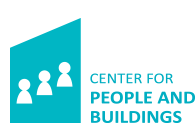Space Utilization Monitor

How is Your Work Environment Utilized?
The utilization of the work environment may be broken down by occupancy, utilization and activities. This raises questions such as:
- What are the occupancy rates for your office?
- How frequent is peak occupation?
- What's the occupancy per type of workplace? Minimum, average, maximum?
- Where do activities requiring concentration most commonly take place? And activities involving interaction?
- What is the occupancy rate for e.g. your meeting spaces?
Space Utilization Monitor
The Space Utilization Monitor (SUM) offers comprehensive, detailed answers to the above questions. SUM is a measuring tool to help objectively map an office's occupancy rate and utilization. SUM explores:
Occupancy - Is a spot occupied by a person, by materials, or unoccupied (available)? Are there sufficient, too many or too few workplaces? Is occupancy related to specific times? Insight into these aspects allows discussion of the desirability of encouraging staggered attendance and if the mix of (activity-based) workplaces fits the organization's work processes (activities).
Utilization - How many people use the occupied space and how does that relate to the intended number of users? This information is relevant mainly in judging if the right mix of meeting spaces is available. Are the number of small, medium-sized and larger meeting spaces appropriate to the organization?
Activities - Which activities occur in the occupied spaces? This helps the organization gain insight into the types of use. Are the intended types of use the same as those observed in practice? Does the mix of (activity-based) workplaces suit the activities performed? Are certain facilities desirable in the spaces, e.g. for telephoning or computer work?
How does it work?
Measuring occupancy rates using SUM doesn't require much of your organization; just clear, up-to-date lay-outs (preferably with the workplaces drawn in), and access to the work environment to be measured. It is essential that employees be informed beforehand, as the measurements will not go unnoticed; occupancy and activities will be registered for an entire week, at a minimum of 8 times per day per spot (taking explicit care not to register employees' personal information). It is essential that all work days within a representative week are measured. To increase the reliability of the results and get a good feel for peak utilization, the two busiest days are remeasured the following week as well.
What do I gain?
The results of measurement using SUM are usually revealing, and often quite confrontational as well. Using SUM, a decision may be made on an empirical basis to rearrange the office space, or not; perhaps using it more intensively through shared workplaces or by alternating activities for an activity-based work environment. Furthermore, SUM provides insight into the minimally required number and dimensions of e.g. meeting spaces.
When?
The occupancy rate is often measured during the initial phases of an accommodations project. The use of the space is investigated and possibilities and arguments for alternative accommodations solutions are explored. Occupancy rates are also measured in order to evaluate to what extent accommodations goals have been met.
